Remembering John Yeoman
by Olivia Ahmad, Quentin Blake Centre team
We were so sad to hear of the passing of John Yeoman (28 July 1934 - 8 July 2024). John was a writer, teacher, rose-grower and Quentin Blake’s oldest friend. From 1960 onwards, they made more than 30 books together: their last was published just two years ago.

We found this photo of John and Quentin at the opening of an exhibition on their work at our previous gallery, House of Illustration. They also appeared together in one of their books - The World's Laziest Duck and Other Improbable Records - measuring an Octopus’ tentacle. Quentin on the left, and John on the right.
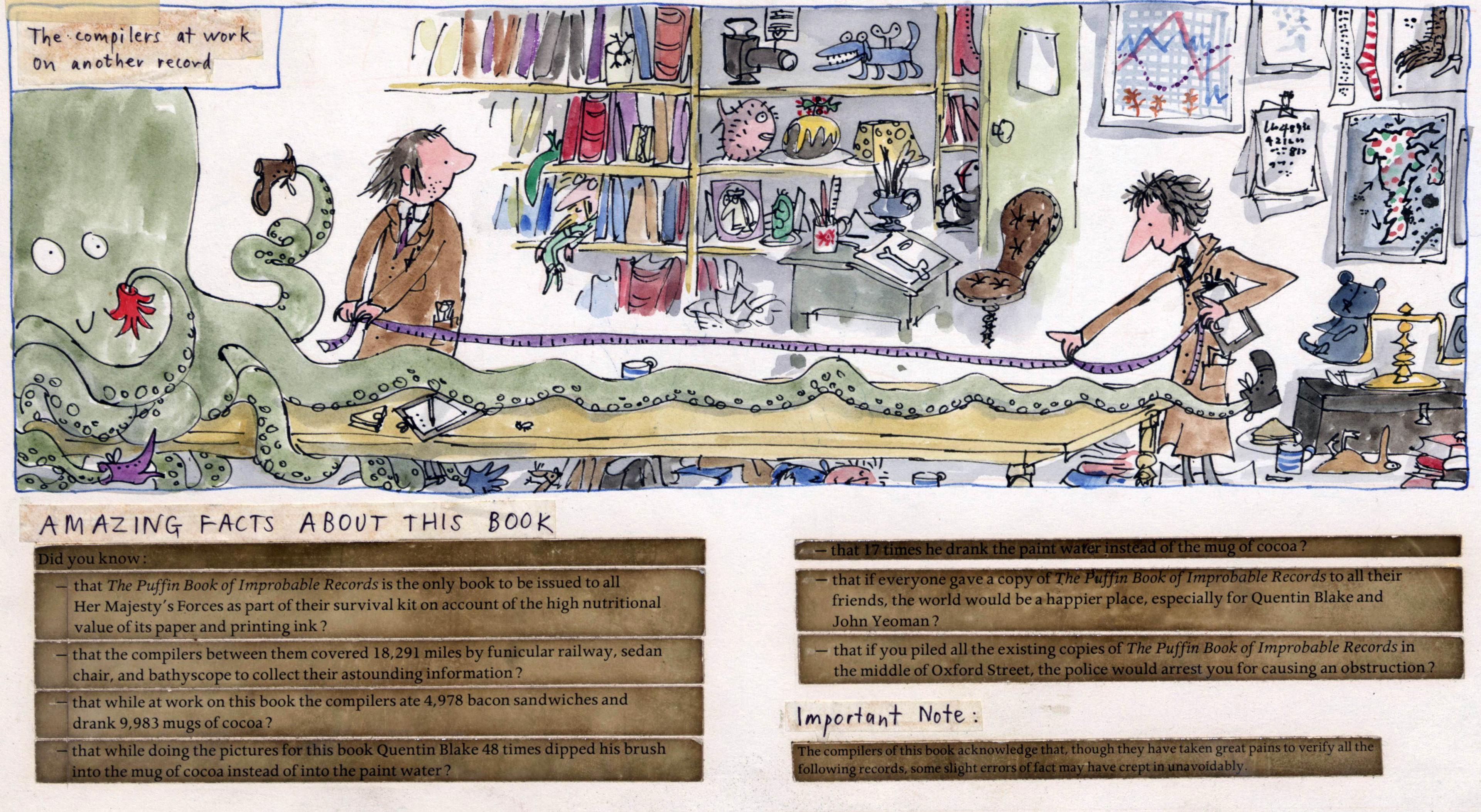
Quentin and John met at school in south-east London. They each went on to study English at Cambridge University, before moving to London where they both trained as teachers. John became an English teacher, while Quentin started his illustration career working for magazines.
“What I really wanted to do was a sequence of drawings between covers” Quentin recalled years later, but he “didn’t really know how to set about that” - he called on John for help. “Quentin wanted a book to illustrate and he just asked me to write one” John explained, “I quite liked the idea of writing; that is, I couldn’t have written a novel at that time, so if I were going to write, it would have to be something short, and for children, because I was beginning teaching.”
Their first book, A Drink of Water, was a collection of folktales, retold by John with the warmth and wit that he carried into his later books. Some were adapted from the Russian stories that he was using in his primary classroom. “I had no view of the book”, John said, “although I’d chosen stories which lent themselves to illustration”. Quentin’s built his first book illustrations with layered drawings in black ink and crayon that were printed in a bold palette of pink and yellow.
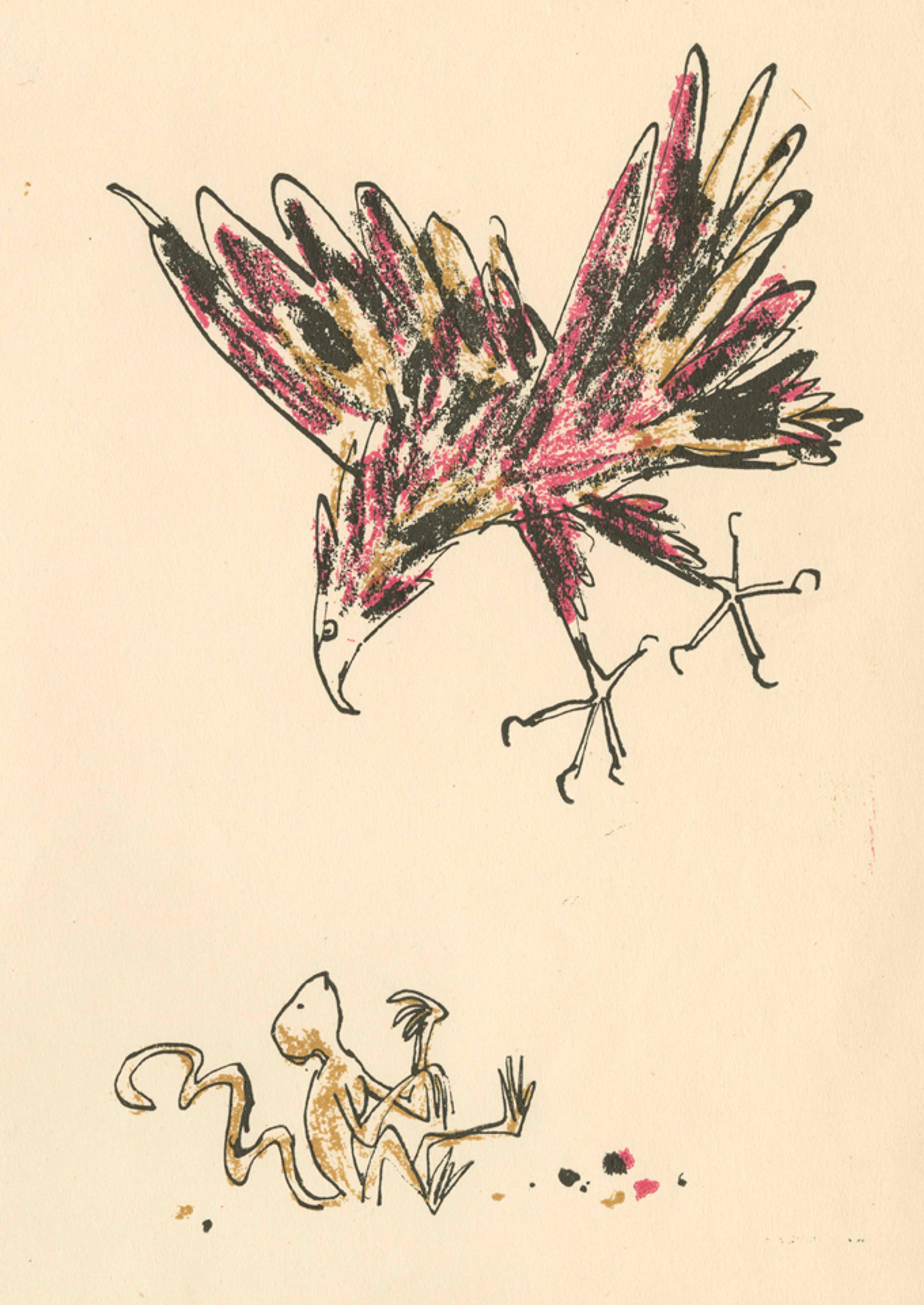
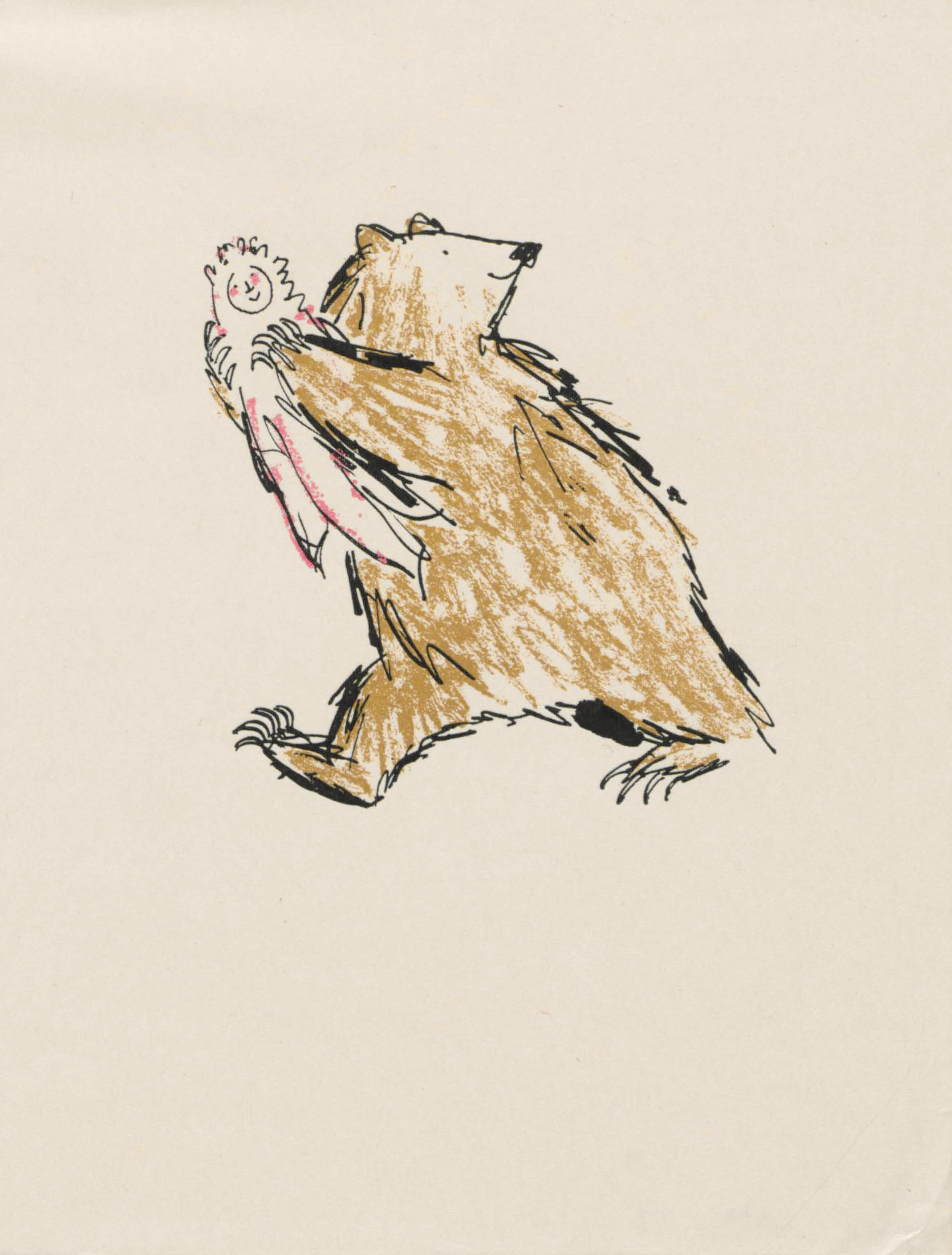
Published in 1960, A Drink of Water was the first of the pair’s many children’s books; from nonsense stories to cumulative counting books and novels. Until the 1990s, they worked on a new book together nearly every year. What was their secret? Quentin said that John’s words “ask to be illustrated”, while John said of his developing stories “I see them in pictures”. It shows: their books have a special synergy between pictures and text. Sometimes John even drew rough versions of illustrations as a starting point for Quentin.
Quentin also helped John, who said of his text for The Wild Washerwomen, “the first draft I gave [Quentin] was sprawling and it had a sort of subplot… which he took his scissors to, and the result was much improved”.
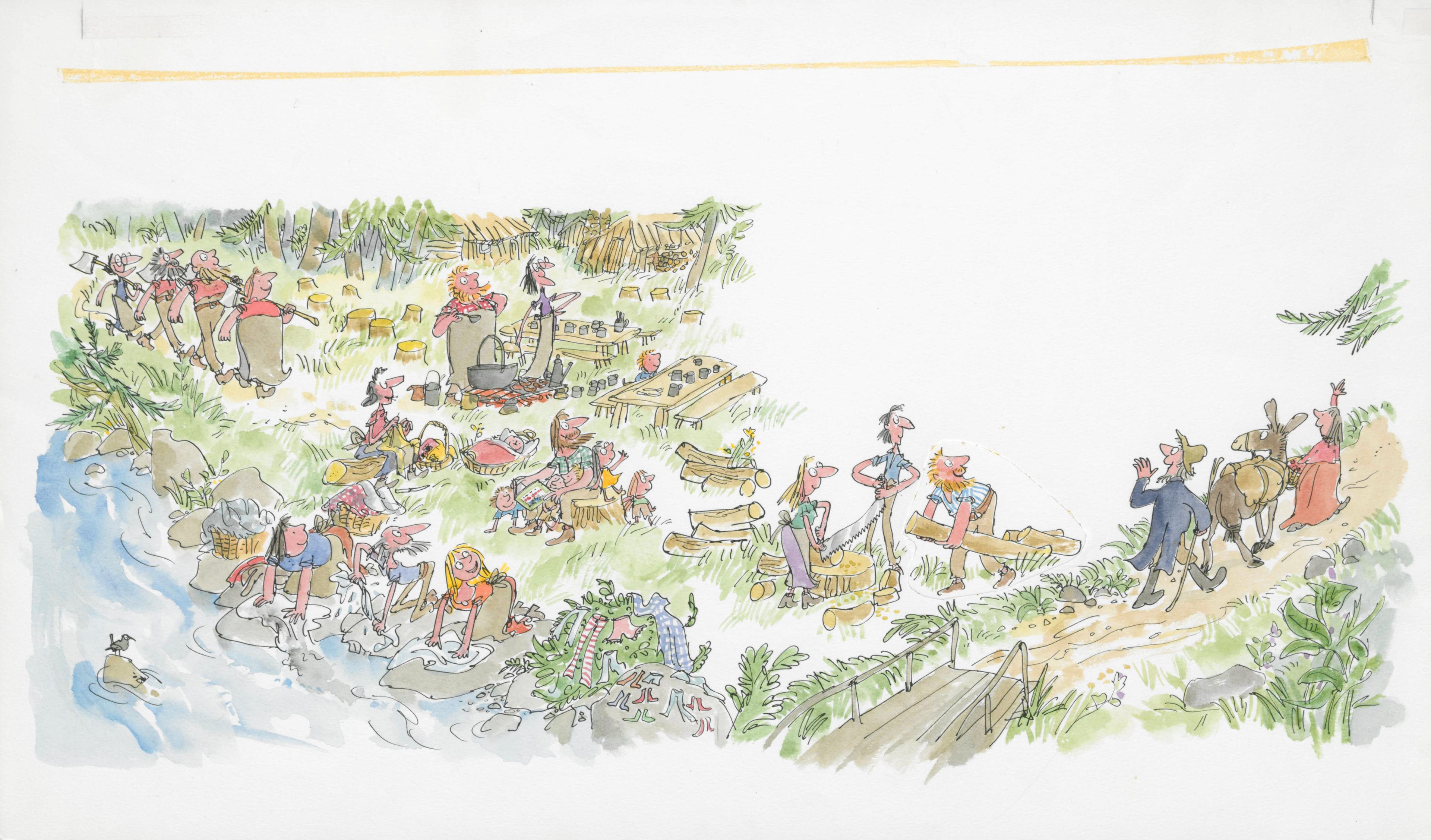
But usually, their writing was very distinct from one another’s. “If my stories are concerned with idiosyncratic individuals” Quentin said, “those of John… frequently involve some group collaboration; sometimes with the intended result and sometimes not”.
John and Quentin’s own collaboration has had amazing results, with more than 30 books published all over the world. Over the past few years, we’ve been lucky enough to share them, exhibiting manuscripts and illustrations for books such as Featherbrains (“the story of two battery chickens who accidentally escape from their prison, and (eventually) come to terms with the dangers and embarrassments of liberty with the assistance of a shrewd and helpful jackdaw” Quentin explains), and The Heron and the Crane (“a retelling of a traditional folktale which has only two characters; they can’t decide whether to get married or not, and with their indecisions and fits of temperament they are a trial to each other”).
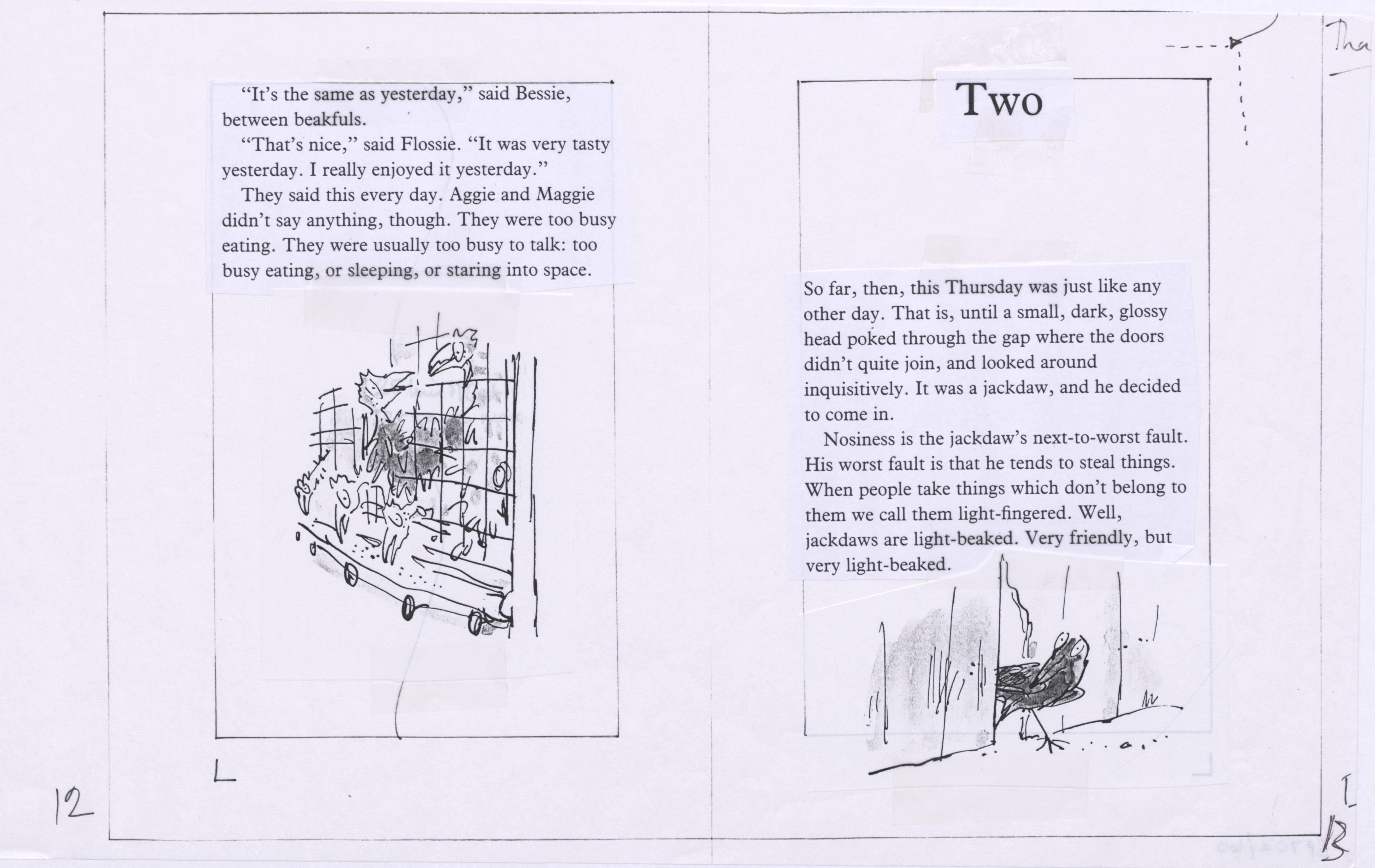
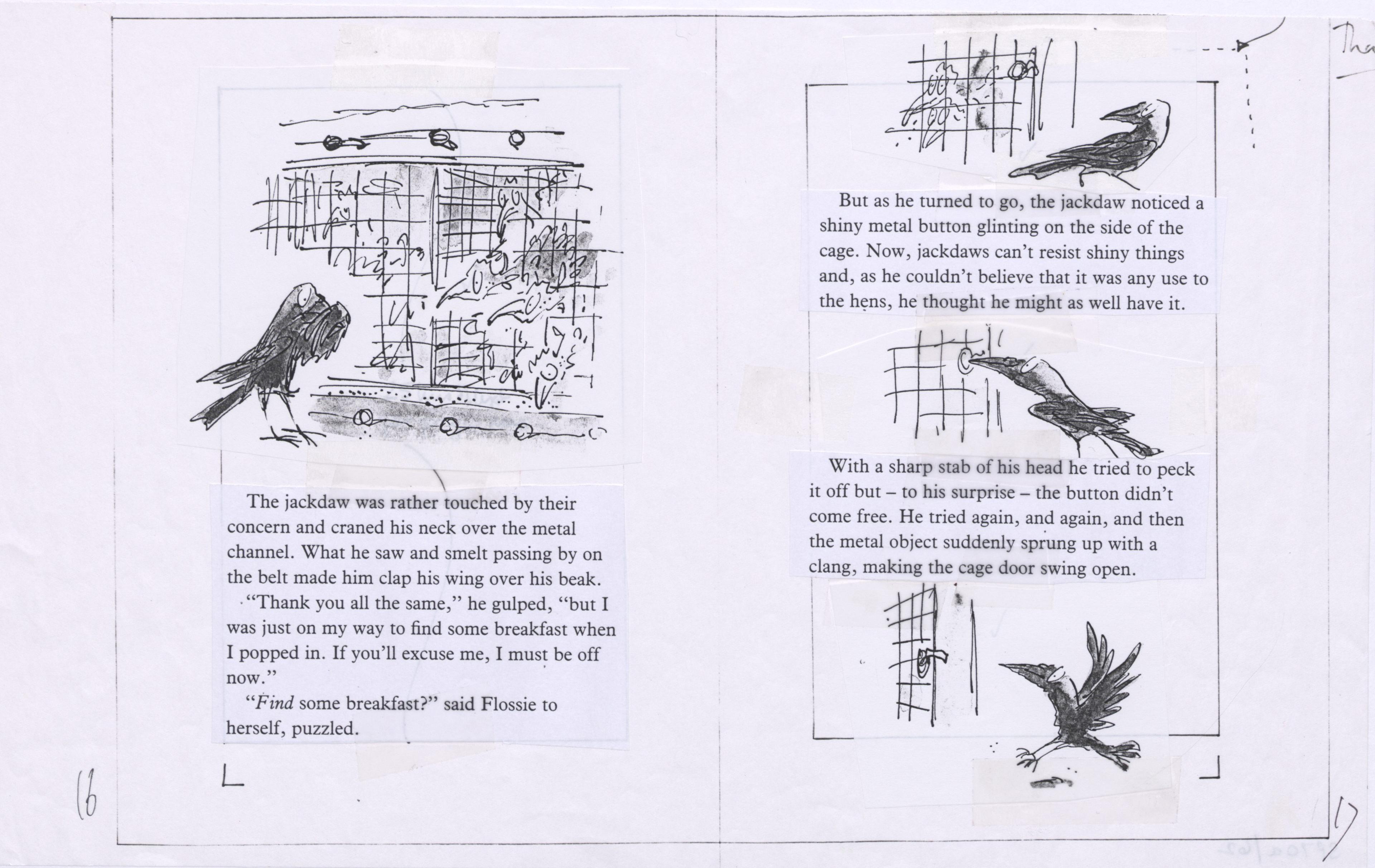
John and Quentin’s last book, Meet the Family is a rollocking rhyming book about an eccentric family, full of fun and high jinx and all the things that the two did so well together as collaborators and friends. We’ll be reading it today and thinking of John.